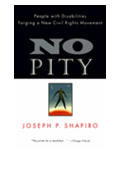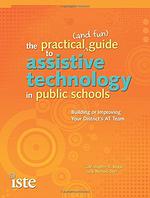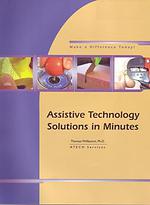
I absolutely LOVE learning new things—from engaging conversations with others…to attending an awesome workshop…or reading a stimulating book! Below are some of my favorite books (yes, I have read them) that can awaken our minds and generate new knowledge, help create caring societies, and design engaging educational strategies for ALL learners!
Topic: Disability
Disability is Natural: Revolutionary Common Sense for Raising Successful Children with Disabilities, Second Edition
by Kathie Snow
Kathie Snow helps us understand that disability is just one characteristic of a person. Families and educators will learn how to support students with disabilities to have rich, full lives, the type of lives they would have if they didn’t have a disability. This is possible when we change our thinking and help others understand students with disabilities are not “broken” and don’t need to be “fixed”. You can order this book and other thought provoking products on her website: http://www.disabilityisnatural.com
No Pity
by Joseph P. Shapiro
Readers will learn more about and understand the Disabilities Civil Rights Movement. People with disability labels do not want or benefit from pity-ridden paternalism or overblown admiration. Instead they ask for common respect and opportunities to succeed as others have.
Rethinking Disability: A Disability Studies Approach to Inclusive Practices
Jan W. Valle and David J. Conner
The authors describe how schools can be more welcoming and all students can achieve more when we view disability through a social lens instead of the traditional deficit based medical mode. Valle and Conner assert that we need to reframe our thinking, instead of examining what is “wrong” with a person with a disability label, we need to evaluate how our society disables people. Educators will learn tools of inclusive education; families will how to challenge current assumptions about educating students with disability labels.
Topic: Assistive Technologies
The Practical (and fun) Guide to Assistive Technology in Public Schools: Building or Improving Your district’s AT Team
by Christopher R. Bugaj and Sally Norton-Darr
The authors use humor and story telling to share tips and strategies to improve the use of assistive (AT) in schools and districts. Advice and ideas for working with teachers, families, IEP teams and students are also given.

“Just Give Him the Whale! 20 Ways to Use Fascinations, Areas of Expertise, and Strengths to Support Students with Autism
by Paula Kluth & Patrick Schwarz
Teachers will learn how to take students areas of expertise, or fascinations and use them as teaching tools, helpful ways to lessen students’ anxiety, and improve their learning.
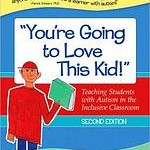
“You’re Going to Love this Kid!” Teaching Students With Autism in the Inclusive Classroom
by Paula Kluth
Paula Kluth has the knack for combining research and first hand experience to give readers a wonderful guide for supporting students with autism in general education classrooms
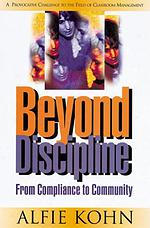
Beyond Discipline: From Compliance to Community
by Alfie Kohn
A classroom community where students feel valued and respected, where students have a major role in making meaningful decisions, and where the curriculum is rich and challenges the students’ curiosity is a healthy environment for students and teachers. Instead of seeing students’ behavior as the problem when they don’t follow teacher directions, Kohn asks the readers to reconsider what students are being asked to do.
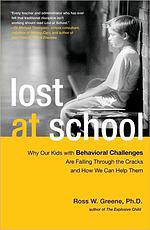
Lost at School: Why Our Kids With Behavioral Challenges Are Falling through the Cracks and How We Can Help Them
by Ross W. Greene
The need to make dramatic changes in an education system that isn’t working for teachers, administrators, families, or students is examined, as well as strategies for making those changes. The author discusses three main shifts that are needed: a better understanding of the factors that lead to challenging behaviors in students, the need for more proactive strategies instead of reactive, and creating processes so educators and families can work collaboratively.

Punished by Rewards: The Trouble with Gold Stars, Incentive Plans, A’s, Praise, and Other Bribes
by Alfie Kohn
Kohn points out that the common practice of offering rewards, used by many teachers, administrators, parents, and employers seems to work in the short run, but is actually very harmful in the long run. Kohn explains how to assist learners, children and employees to develop their intrinsic interests, their desires to be self-directed learners, and grow into caring, responsible adults.
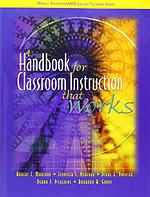
A Handbook for Classroom Instruction That Works
by Robert J. Marzano, Jennifer S. Norford, Diane E. Paynter, Debra J. Pickering, and Barbara B. Gaddy
Individual teachers or professional learning communities will find this handbook very useful. The authors review research-based strategies, outline how to implement them, and most importantly how to evaluate the effectiveness of the teacher’s instruction.
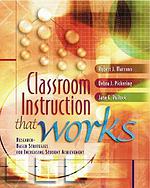
Classroom Instruction That Works: Research-Based Strategies for Increasing Student Achievement
by Robert J. Marzano, Debra J. Pickering, and Jane E. Pollock
AClassroom Instruction That Works can assist teachers and administrators apply educational research everyday in every classroom. The authors share nine broad teaching strategies, which have been shown to make significant difference in student learning. Numerous classroom examples of how individual teachers effect learning are given.
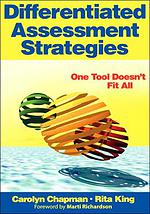
Differentiated Assessment Strategies: One Tool Doesn’t Fit All
by Carolyn Chapman and Rita King
Readers can increase their ability to gather data before, during, and after instruction from a variety of sources to identify students’ strengths and learning needs. Many practical tools, surveys, checklists, questionnaires, organizers, and rubrics are included in the book.
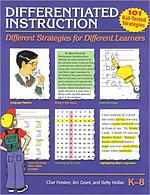
Differentiated Instruction: Different Strategies for Different Learners
by Char Forsten, Jim Grant, and Betty Hollas
More than 100 practical and unique classroom ideas for meeting the needs of diverse learners are included. Different pathways of learning are arranged by grade level, K–8 and by subject matter. Teachers will find this a very user–friendly reference.
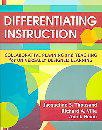
Differentiating Instruction: Collaborative Planning and Teaching for Universally Designed Learning
by Jacqueline S. thousand, Richard A. Villa, and Ann I. Nevin.
The authors explain how to combine co–planning, co–teaching, universal design for learning, and collaboration to differentiate instruction. The guidelines are appropriate for English–language learners, students considered gifted, and for students receiving special education services. Examples of content lessons for elementary through high school–aged students are included.
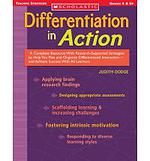
Differentiation in Action
by Judith Dodge
Judy Dodge combines research on brain-based learning with differentiated instruction. She also combines an updated Bloom’s Taxonomy with Howard Gardner’s work on multiple intelligences to create, “Gardner in Bloom.

Dinah Zike’s Big Book of Projects: How to Design, Develop, & Make Projects, From Kindergarten Through College
by Dinah Zike
Dinah has developed many “foldable” projects that teachers and parents can use with students of all ages. Project work is a great alternative for students to show what they know and are able to do.

From Tutor Scripts to Talking Sticks: 100 Ways to Differentiate Instruction in K–12 Inclusive Classrooms
by Paula Kluth and Sheila Danaher
Gotta love Paula Kluth’s books if you are looking for creative strategies that are easy to implement and make a big impact on students’ achievement! This is a terrific resource for educators who want to “see” what differentiation looks like and have additional resources, including websites to reference.

Instruction for All Students
by Paula Rutherford
A toolbox in a book! Tools for creating engaging lessons, and authentic assessments for K-12 students. Tools for teaching thinking skills for the 21st century are also included.
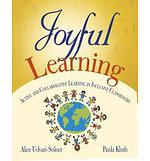
Joyful Learning: Active and Collaborative Learning in Inclusive Classrooms
by Alice Udvari-Solner and Paula Kluth
Joyful Learning illustrates how active and collaborative learning allows learners to make meaningful connections and show what they are able to do. The ideas in this book can be used with elementary to university level students.
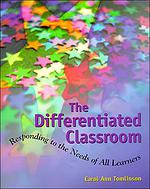
The Differentiated Classroom: Responding to the Needs of All Learners
by Carol Ann Tomlinson
Carol Ann Tomlinson assists educators turn the theory of differentiated instruction into practical ways to effectively instruct students with diverse backgrounds, readiness, skill levels, and interests. The description of actual lessons and examples of instructional strategies is a gold mine for teachers.
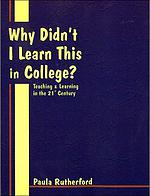
Why didn’t I Learn This in College?
By Paula Rutherford
Teachers will love all the practical ideas in this book about differentiated instruction, cooperative learning, setting up classrooms, assessment tips and partnering with parents.
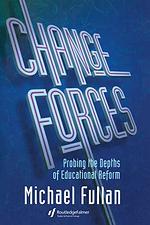
Change Forces Probing the Depths of Educational Reform
by Michael Fullan
Michael Fullan does an excellent job helping teachers know how to increase their capacities to deal with change, learn from it, and help students learn from it. Fullan asserts the current state of education affairs need more than tinkering. Instead, a change of mindset is required.

Creating an Inclusive School 2nd edition
by Richard A. Villa & Jacqueline S. Thousand
Administrators, educators and families can learn how students with diverse strengths and needs can be successful in general education classrooms. A variety of strategies, such as cooperative learning, team building, multi-age grouping, and social skills training are included.
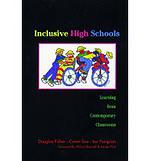
Inclusive High Schools: Learning From Contemporary Classrooms
by Douglas Fisher, Caren Sax, and Ian Pumpian
Secondary educators will appreciate a book devoted to specific inclusive strategies for them. Examples of high schools’ journeys and how they reached success in allocating school resources, adapting curriculum, and establishing a community of learners to create inclusive classrooms are given.
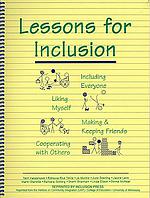
Lessons for Inclusion
published by Institute on Community Integration, College of Education, University of Minnesota
Educators will have many lessons at their fingertips to develop a classroom community where all children work together to support active learning. Lessons are provided in these areas: Including Everyone, Liking Myself, Making & Keeping Friends, and Cooperating with Others.
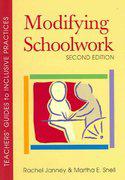
Modifying Schoolwork, 2nd Edition
by Rachel Janney & Martha E. Snell
General and special educators can use this hands–on resource to enhance all students’ learning in general education classrooms. Professionals will receive practical guidance on adapting curriculum for individual students, how to modify assessments, and adapting instruction in key content areas.
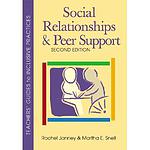
Social Relationships & Peer Support 2nd Edition
by Rachel Janney & Martha E. Snell
Developing, facilitating, maintaining friendships and the use of peer supports between students with and without disability labels is the focus of this book. The authors have included current research, effective strategies, and sample planning guides and forms.
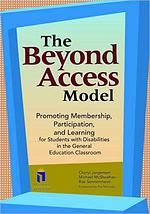
The Beyond Access Model: Promoting Membership, Participation, and Learning for Students with Disabilities in the General Education
by Cheryl M. Jorgensen, Michael McSheehan, and Rae M. Sonnenmeier
The underlying value of presumption of competence directs educators to create ways for students to not merely be present in general education classrooms but to participate and be authentic learners. A CD-ROM is included with many useful checklists, forms, and templates.

The Paraprofessional’s Handbook for Effective Support in Inclusive Classrooms
by Julie Causton-Theoharis
Paraprofessionals play an important role in inclusive classrooms. This handbook has practical tips for both teachers and paraprofessionals for using natural academic and behavioral supports in general education classrooms.
Whatever Happened to Inclusion? The Place of Students With Intellectual Disabilities in Education
Edited by Phil Smith
Phil Smith outlines the state of inclusion from a national and state perspective. He also addresses the changes that must be made in teacher preparation programs, policy, funding, and local schools to make inclusion a way of life.
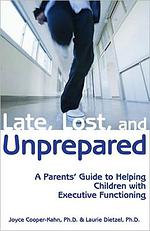
Late, Lost, and Unprepared: A Parent’s Guide to Helping Children with Executive Functioning
by Joyce Cooper-Kahn and Laurie Dietzel
A helpful book for parents wondering how to assist their children to become more organized, self-monitor their behavior, to generate ideas or problem solving strategies, and to plan for long term projects. The authors offer both short–term and long–term strategies so children can be successful now and in the long run.

Learning Outside the Lines
by Jonathan Mooney and David Cole
Mooney and Cole tell the stories of their lives, growing up being called stupid and lazy in school. Most of their teachers had very low expectations for them and presumed they would be failures. However, both authors developed ways to take back their education, devise alternative study skills, and realize personal empowerment. Students, families and educators can all learn the value of living a life less ordinary by reading, Learning Outside the Lines.

I Read It, But I Don’t Get It: Comprehension Strategies for Adolescents Readers
by Cris Tovani
Middle school and high school teachers will gain a wealth of strategies to help students develop new reading comprehension skills. The book also gives numerous tips and strategies that will help not only struggling readers, but proficient and advanced readers as well.
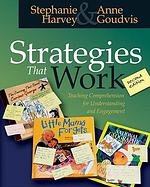
Strategies That Work: Teaching Comprehension for Understanding and Engagement
by Stephanie Harvey and Anne Goudvis
Harvey and Goudvis show the difference between assessing reading comprehension and teaching comprehension. Teaching the reading/thinking strategies described in this book will guide teachers to help students engage in and understand what they read.
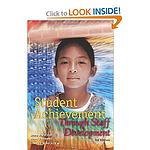
Student Achievement Through Staff Development, 3rd Edition
by Bruce Joyce and Beverly Showers
Joyce and Shower’s book assists educators and administrators to develop effective staff development programs that go beyond one–shot workshops and make real differences in student learning. The authors demonstrate through case studies of successful programs and research–based evidence how solid knowledge, good skills, consistent implementation and peer coaching are critical components in order to ensure students achieve more in classrooms.

